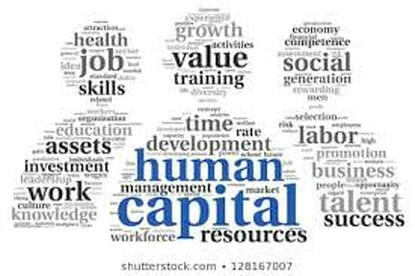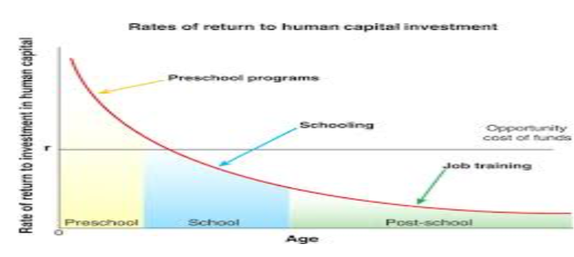 The history of measuring development is replete with models. The Standard Index, Gross Development Product (GDP) and its variant, Gross National Product (GNP)/Gross National Income (GNI) has been continuously questioned as a true measure of human development. GDP is defined as the sum of the economic activity that consists of the value of goods and services produced by the citizens inside the border of a country in a given year. GNP/GNI has the same definition but it also includes the economic activity of citizens who live outside the country’s border. The use of GDP is very popular because it is easy to track progress along a continuum. It is also politically preferable for showing achievements. Furthermore, it is assumed to be able to predict the overall progress of development. Many governments and development agencies such as the World Bank, and the IMF use GDP as a baseline to develop policies and projects. http://www.brandonkendhammer.com/politics_of_development/how-do-we-measure-development-and-why-does-it-matter/ The dissatisfaction with GDP as a measure of development led UNDP in 1990 to create the Human Development Index (HDI). The intention was to emphasize that people and their capabilities should be the ultimate criteria for assessing the development of a country, not economic growth alone. The HDI was therefore created as an indication that national policy choices may explain how two countries with the same level of GNI per capita (GDP) can end up with different human development outcomes. As illustrated in the diagram, HDI is a summary measure of the average achievement in key dimensions of human development: a long and healthy life, being knowledgeable and having a decent standard of living. In support of the HDI, Amartya Sen, Nobel Laureate aptly describes development as creating freedom for people and removing obstacles to greater freedom. He argues that greater freedom enables people to choose their own destiny; and that obstacles to freedom, and hence to development, include poverty, lack of economic opportunities, corruption, poor governance, lack of education and lack of health. Subsequently, the UN promoted the 2015 Millennium Development Goals (MDGs), and the 2030 Sustainable Development Goals (SDGs) with a number of targets, largely responses to Sen’s vision. What all of these goals and targets contend is that economic development is a broader concept than economic growth and that development reflects social and economic progress and requires economic growth. While they all recognize that growth is a vital and necessary condition for development, they agree that it is not a sufficient condition as it cannot guarantee development. More recently, the World Bank has initiated a Human Capital Development Project in an attempt to identify “the sufficient condition to guarantee development”. The project has established a Human Capital Index, the first version of which was released in October 2018. This metric is intended to measure the human capital of the next generation. Hence, the main concerns are with (a) the conditions that increase the survival rates of children under 5 years, (b) the expected years of learning-adjusted school, reflecting the quality and relevance of the learning environment; and (c) the overall health environment throughout the life cycle.
http://www.worldbank.org/en/publication/human-capital The focus on Human Capital is fascinating, especially in this era of the 2030 Sustainable Development Goals which will be explored more fully in another blog. But as shown in the diagram, the rates of return are maximized by investing in preschool programmes and sustained through quality of life long learning and job training. The major inputs to Human Capital Investments are improving skills, health, knowledge and resilience. And the major outcomes are productive, flexible and innovative citizens, communities, nations and regions. The World Development Report 2019: The Changing Nature of Work supports this view by illustrating how investment in Human Capital becomes more important as the nature of work must respond to rapid changes in technology. More important is that markets in the future are projected to be demanding workers with higher levels of human capital especially advanced cognitive and socio behavioral skills with a pay difference of 25%-30% between those capable of performing analytic non-routine work and those without such skills. The early takeaways from the exploratory studies within the Human Capital Development Project provide the basis for further dialogue on the value of focusing on Sustainable Human Development. They include:
References Stiglitz Joseph, Amartya Sen, and Jean Paul Fitousi, The measurement of Economic Performance and Social Progress Revisited - OFCE - Centre de recherche en économie de Sciences, December, 2009 World Development Report 2018 Learning to realize Education’s Promise, World Bank, Washington DC 2018 Tim Evans, Without Health for All we will all end up in poverty by 2030, World Bank Blog December, 2017 Eddie Greene
10 Comments
Denese McFarlane
5/10/2019 07:09:01 am
This is a very interesting commentary, and while I agree to the disparity in health, education and governance I think the distinction should also include developed and developing countries. Although the Bank as well as the UN looked at the issues globally, more must be said on how they will leverage between those countries who have and the have nots. The influence of developed countries and the struggles of developing countries whose GDP can never be equal.
Reply
Havelock Brewster
5/10/2019 09:22:57 am
Thanks Eddie for your GOFAD blog. Just one or two things, briefly, that occur to me. Maybe it is already intended in future blogs to touch on them. But first - is there a danger of this initiative being too institutional- centric? Revolving essentially around the thoughts and practices of WB/IMF/UN? Or maybe this is deliberately the intention?
Reply
Dianne Greene
5/10/2019 09:27:11 am
This blog reflects much of the new thought process around HCM and the changing needs in the workplace due to technology advancements — a direct impact on the work I do everyday.
Reply
Sean Major-Campbell
5/11/2019 12:54:50 am
A necessary reminder in our time. The affirmation of the Human Development Index and Human Capital, is to be kept high on any political agenda that intends to be taken seriously.
Reply
George Rutherferford
5/11/2019 10:33:50 am
Great work. My worry though is the use of the term EDUCATION. It means different things to different people and and at times can me irrelevant having regards to the needs of Society. There needs to be definitive parameters established for it or it may qualify to be what Paulo Friere considers as idle blah
Reply
Richard Bernal
5/12/2019 03:02:23 pm
Very good refresher on this important subject.
Reply
David Bindley-Taylor
5/16/2019 11:13:48 am
I think most people will agree with these aspirations of what's to be done, it's the WILL that fails & this is the responsibility of good governance. As George Rutherford points out education is not the panacea as we know only too well the armies of educated unemployed & underemployed on a global scale. Without any examination of what is the value & quality of an education (apart from the lure of a ticket to socioeconomic mobility) to society's needs.
Reply
Hakeem
6/18/2019 03:43:29 am
This is a very interesting blog. It highlights what needs to be done particularly in the developing countries, if the achievement of the SDGs is ever going to be possible.
Reply
8/26/2021 03:10:20 am
The popularity of blue jeans allowed Levi Strauss and Company to become the largest clothing maker in the world during 1977. Blue jeans continued to be a popular item through the 1980’s, which is often considered the decade of designer jeans.
Reply
10/23/2023 02:16:06 am
Placing human capital at the center of the Sustainable Development Goals (SDGs) is a pivotal and forward-thinking approach. It underscores the fundamental truth that human potential, health, education, and well-being are not only intrinsic values but also essential drivers of sustainable development. By prioritizing investments in people, we create a strong foundation for achieving all other SDGs, from eradicating poverty to ensuring environmental sustainability. This paradigm shift highlights the interconnectedness of social and economic progress with the broader global sustainability agenda, reminding us that people are both the beneficiaries and architects of a brighter, more sustainable future for all.
Reply
Leave a Reply. |
Details
AuthorEdward and Auriol Greene Directors, GOFAD. Archives
April 2022
Categories |
Global Frontier Site Links |
Contact InformationEmail: [email protected]
Twitter: @GofadGlobal |


 RSS Feed
RSS Feed
